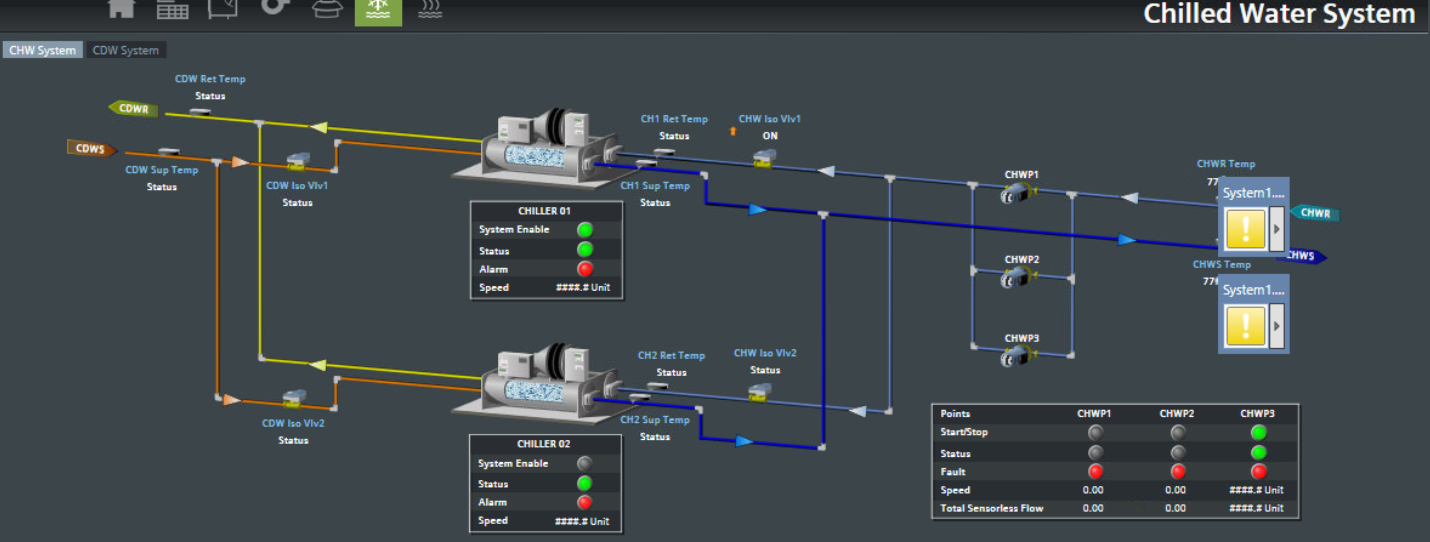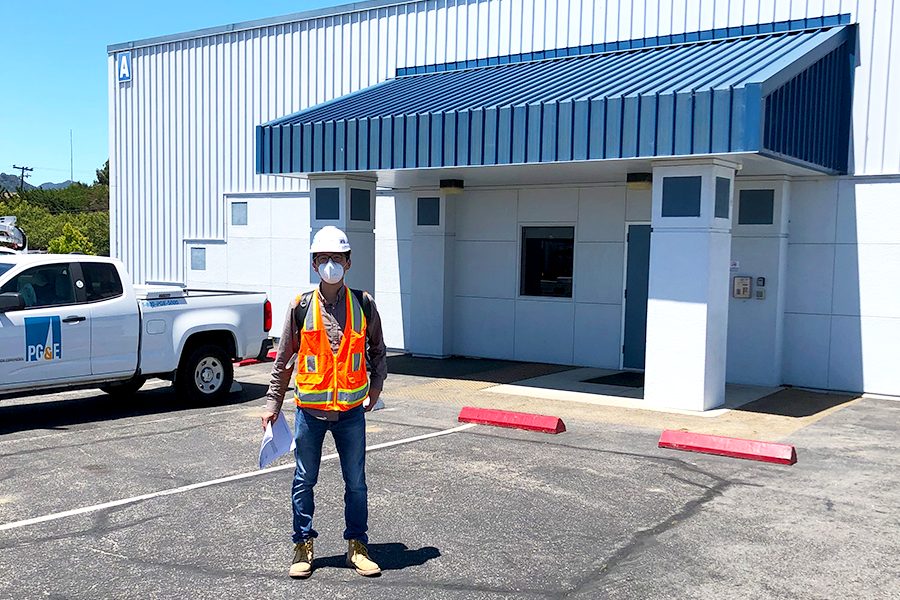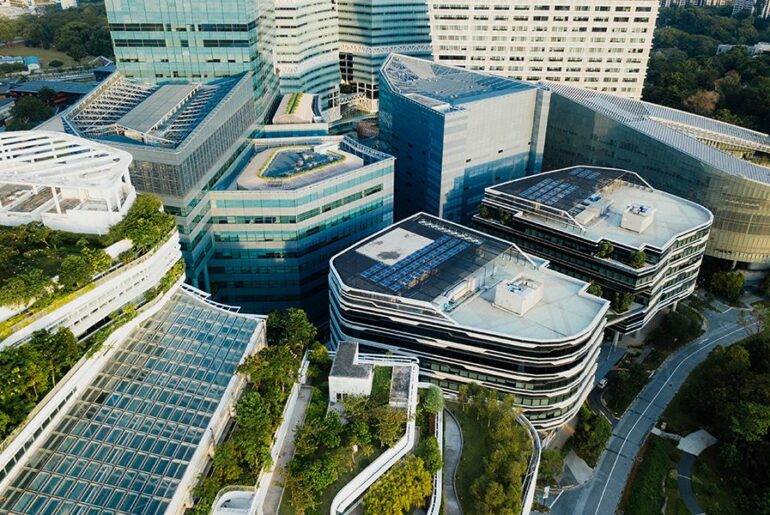Building commissioning has remained a priority throughout the COVID-19 pandemic, but with tiny mechanical rooms that make social distancing a challenge on site, building operators and engineers must get creative to safely stick to their projects’ commissioning schedules. On top of typical project needs, recommissioning your building’s systems is critical for safely returning to buildings in a post-pandemic world.
Here we outline the process and lessons learned of how Stok’s commissioning team is continuing to safely commission buildings during COVID-19, both virtually and on site.
OPTION #1: VIRTUAL BMS TESTING
The Process
Virtual Building Management System (BMS) testing has seen major adoption during the pandemic and may become the new normal in a post-COVID-19 world. In it, a project’s commissioning agent virtually tests and reviews the building’s systems through a digital BMS dashboard prior to going on site to test and monitor the systems in person. The virtual process helps the commissioning provider not only better understand the control loop beforehand, but also allows them to grasp the complexity and thoroughness of the control programs and identify BMS control issues that are not programmed per sequences in advance. This can help avoid non-essential site visits or shorten the duration of a required site visit during the building close-out phase when commissioning typically occurs.
Your commissioning provider should champion clear communication with the client throughout. It’s best to loop the project team into the virtual process as early as possible, give the team a full rundown on how remote BMS testing works, execute the remote testing, then get feedback from the client to improve the virtual process in the future as it continues to be adopted more widely.

The dashboard displays the building’s BMS graphics, showing systems that need to be commissioned, like the chilled water system and air handler unit. Items typically reviewed during the BMS virtual testing include completeness of the BAS graphics, current set points, limits, delays, and PID loop if applicable. With support from the control contractors, your commissioning provider can also back-check the point-to-point results, verify if actuators and valves are responding to the BMS command appropriately, and spot-check the sensor calibration to ensure the BMS is reliable.
Lessons Learned
The response so far to remote testing from our clients has been very positive. The main benefit is increased participation by the client. Often due to time constraints, the client or full project team cannot be directly involved in on-site testing, which constricts the effort—and thus full understanding—to the commissioning team. When testing goes virtual, the whole project team is more likely able to participate and benefit by gaining hands-on understanding of how the building systems they interact with work. This increased participation extends to the frequently full schedules of upper management, who can now more easily join in virtual testing demonstrations, which have a shorter and far more flexible time commitment than on-site testing.
Thanks to its ease, as well as engagement and educational benefits, virtual BMS testing with a significantly reduced amount of on-site verification is a preferable option during COVID-19 for many clients, and some are planning to continue with remote testing even after the pandemic. The main potential hiccup to be aware of, like in many virtual solutions, is your network connection. Poor network connection can disrupt your meetings and testing, thus slowing down your commissioning efforts. If that is solved for, remote testing is a practical and virtually seamless option for commissioning during and beyond the pandemic.
OPTION #2: ON-SITE TESTING
The Process
Virtual BMS testing is a great option, but many projects still require some on-site testing and verification. When a project does require on-site testing during the COVID-19 pandemic, your commissioning provider should take all baseline precautionary measures possible, as well as address site-specific safety concerns outlined in a Site Specific Safety Plan that each project should share with the team in advance of the site visit for full review.
Stok’s commissioning team adheres to our official COVID-19 On-Site Safety Protocol, which outlines base requirements to be followed by all essential workers on any field visit. The on-site safety regulations include four general requirements:
• Wash hands frequently
• Practice physical distancing (both on site and in transit to and from the job site)
• Adhere to PPE guidelines (including wearing a mask, safety glasses, and gloves)
• Participate in free COVID-19 testing for essential workers (either prior or soon after going on site)
Preparing to go on site for a project in central California!

Lessons Learned
While virtual testing is the safer option during the pandemic, there are ways to maximize safety while adapting to new on-site working conditions presented by COVID-19. From our experience to date, Stok’s commissioning team has identified four best practices to enhance efficiency and safety during on-site commissioning:
• Lead by example. It is not always possible to fully practice social distancing at construction sites and not all workers will follow safety guidelines. Whether or not this is the case, lead by example and set the standard for safety on site by following all requirements and more. This may inspire those around you to adopt safer practices for the protection of everyone on site.
• Take care of yourself. Working in the field while wearing a mask is tiring. Masks can also cause discomfort, especially around your ears and nose. Therefore, it is important to take breaks, further physically distancing yourself from people and drinking plenty of water. Taking frequent breaks can help maintain your energy levels while out in the field.
• Disinfect your PPE. After testing, wipe all your PPE with alcohol-based wipes to disinfect them thoroughly. Avoid reusing the mask if possible.
• Get tested. If your commissioning provider visits multiple construction sites in the same week, it’s recommended to get tested immediately after the first site visit to ensure they avoid spreading the virus in case the test results come back positive.
LOOKING FORWARD
Whether it is virtual BMS testing, on-site testing, or recommissioning for building re-entry, commissioning plays a vital role in keeping our built environment safe, now more than ever. Looking beyond current needs for testing, this pandemic has solidified the fact that buildings need to be designed and operated for resiliency and occupant health—without sacrificing efficiency. When commissioning providers are brought in at the project outset, they help ensure the building owner’s goals and intent are embedded in design and executed in construction. This can help ensure all goals—from resiliency to occupant health to energy efficiency—are met at every phase of the project.
Reach out to Stok’s commissioning team to learn more about safe commissioning during COVID-19 and beyond.


